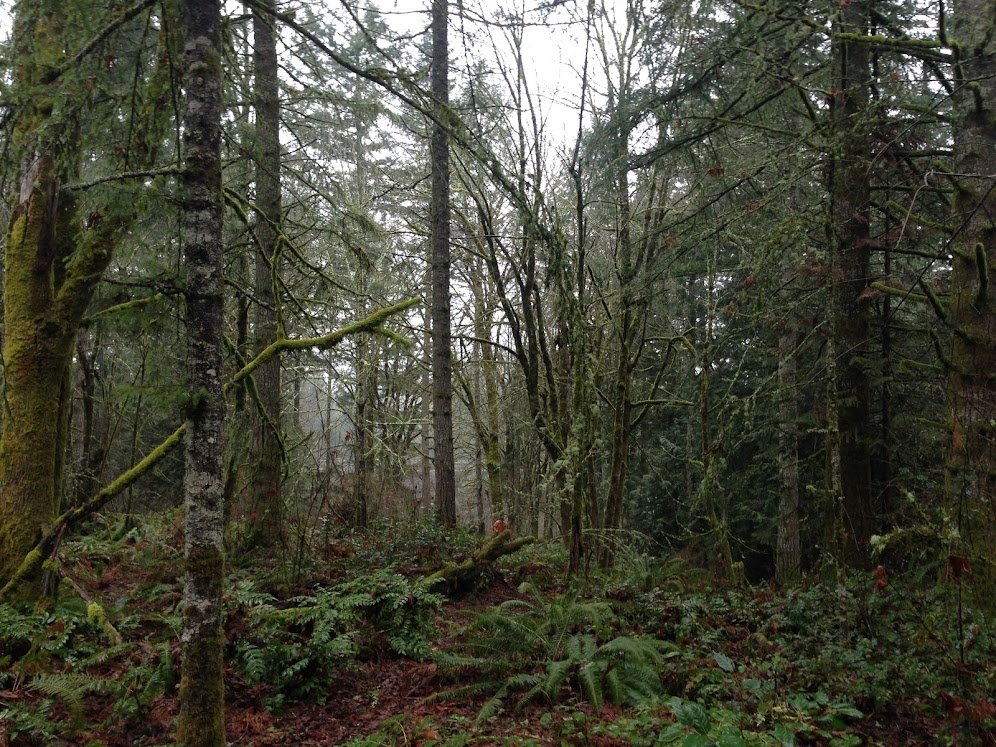
Native Plant Salvages
What is a plant salvage?
In February and March, volunteers salvage small native trees, shrubs, ferns, and herbaceous plants from local areas scheduled for clearing. Salvages are a great way to practice plant identification and to meet fellow plant nerds! We only salvage during this short window during the year; this is when conditions are both favorable for digging and when the plants are still dormant.
The plants are cared for at NPSF nursery and eventually used by NPSP, Thurston Co. Steam Team, and other community groups to restore habitat and improve water quality in and around Thurston County. In addition to salvaging for NPSF, volunteers are also welcome to salvage plants for their home naturescaping, restoration, or green-stormwater projects. Some folks take just a couple of plants to add to their garden and others take hundreds for larger projects!
When and where do salvages happen?
Salvages typically occur in the cold winter months (February-March), when the plants are dormant and less likely to perish from the stress of being moved around.
Locations vary by available salvage sites and the day is separated into two sessions, each ~3 hours long. Volunteers may join us both at the site for rescuing the plants as well as the nursery to help us pot everything up!
You are invited to help for however long they feel capable; whether that's all day, or for just one part. We appreciate your contribution, however long you can stay!
What does a salvage day look like?
Part 1: We meet at the salvage site, and volunteers are trained on-site how to properly identify and dig up desired native plants. Once plants have been salvaged, we ask volunteers with pickup trucks to help us transport them to our native plant nursery in West Olympia, where we pot-up the recovered plants.
Part 2: The afternoon is spent at our nursery, where new volunteers learn from the veterans how to properly pot the salvaged plants, and then organize them for later distribution. This is a great way to learn and practice native plant identification, especially winter-twig ID skills!
Keep an eye on our calendar (opens in a new tab) to be sure you don’t miss an opportunity!
Accessibility
Volunteers with disabilities and special medical considerations are always welcome! Keep in mind that the nature of our outdoor facilities and programs can mean that accessibility for those with certain mobility aids is highly weather and site dependent. Each year, we work at new sites with varying substrates that may be overgrown with various trip hazards. Our nursery is often muddy and can be prone to pot holes in the rain. We often set up low tables for folks to sit at while they work on potting up, weeding, or pruning. There is plenty of shade and it is often a few degrees cooler at the nursery than in the surrounding areas. Below are specifics about what is involved in salvaging so that you know if this program is a good fit for you. If you have any questions, please do not hesitate to contact us.
Physical motions done during salvaging:
Bending over
Kneeling
Digging
Pruning
Light to moderate lifting
Hauling plants back to the parking area in bags (or a wagon, if you bring one)
Other tasks include:
Greeting volunteers and collecting paperwork
Verbally directing folks loading vehicles with plants
Cleaning tools, tables, and bins
Hanging bags to dry
Potting up or pruning plants




